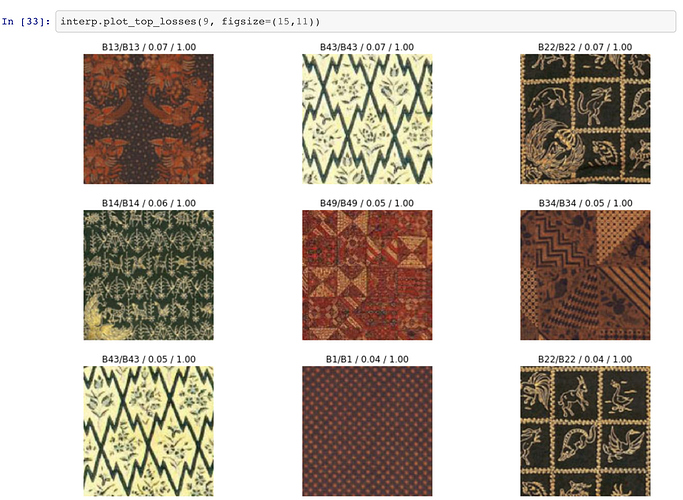I have started my Batik classification. Batik is Indonesia’s ancient dyeing technique for cloth. For the first attempt I use just a small batik dataset contains only 300 pictures split in to 50 types of Batik cloth. Each cloth is captured to as much as six random images and then resized to 128x128 pixels size in JPEG format.
It seems that this small dataset with 50 classes is not really a challenge, since both Resnet models achieved accuracy of 100% after just few epochs.
An here is the notebook: https://github.com/cahya-wirawan/FastAI-Course/blob/master/lesson1-batik-1.ipynb
The next step would be to find more comprehensive Batik dataset, which is maybe the biggest challenge it self 

